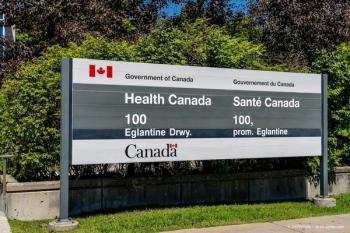
AAO 2024: Injectable endothelial cell therapy shows promise for improving vision and reducing glare in corneal edema
Matt Giegengack, MD, explains how injectable corneal endothelial cell therapy can enhance visual acuity and alleviate glare, offering a versatile alternative to current treatments like DMEK.
Matt Giegengack, MD: My name is Matt Giegengack. I'm a cornea specialist at Wake Forest University. I'm going to be talking to you today a little bit about brightness acuity testing after endothelial cell therapy for corneal edema. I've had the privilege of working with Aurion Biotech for the last four years. I was one of the surgeons that worked on their clinical trials in El Salvador. We presented that on those trials at the last several meetings.
One of the secondary endpoints that we haven't presented is brightness acuity testing. And this is an important endpoint because as the treatments for corneal endothelial disease have improved our threshold for offering the surgeries has gotten lower, understandably, and one of the main reasons that I perform Descemet membrane endothelial keratoplasty (DMEK) now for my patients, the gold standard for treating Fuchs disease and corneal edema, is for bothersome glare. We hope to show that corneal endothelial cell therapy is also a treatment for glare in much the same way that DMEK is and the way we're trying to do it with this data that we're showing you is we pulled some of the El Salvadorian data the patients that were treated similarly, and looked at best-corrected visual acuity and brightness acuity testing at certain time points over the course of a one-year followup. The results are really promising, as at each of those time points, the best-corrected vision is better and the brightness acuity testing is better, and they kind of improve in lockstep with each other, suggesting that this treatment is good for treating the vision problems of corneal edema, but also the glare.
One thing about the El Salvadorian patients is they were more severe disease and we have a US clinical trial that's currently under way treating less severe disease and we hope that it will also show that this treatment is good for the treatment of glare.
One of the complications with DMEK... DMEK is the best surgery that we have right now for treating Fuchs dystrophy and endothelial disease. One of the problems with that surgery is that you can't do it on every patient. You can't do it on patients that have unstable lenses or certain glaucoma procedures but endothelial cell therapy is going to be a treatment that you can do on anybody that has corneal edema. Consequently, some of the patients we treated in El Salvador had other things wrong with their eyes that maybe we wouldn't have been able to treat with a traditional DMEK, andthose are some confounders on our data. The US trial that we're doing, I hope is going to show that this is a great treatment for all the patients that we currently treat with DMEK, but I really hope it's going to show that it's also going to be a great treatment for all the patients we can't treat with DMEK.
Newsletter
Get the essential updates shaping the future of pharma manufacturing and compliance—subscribe today to Pharmaceutical Technology and never miss a breakthrough.















































